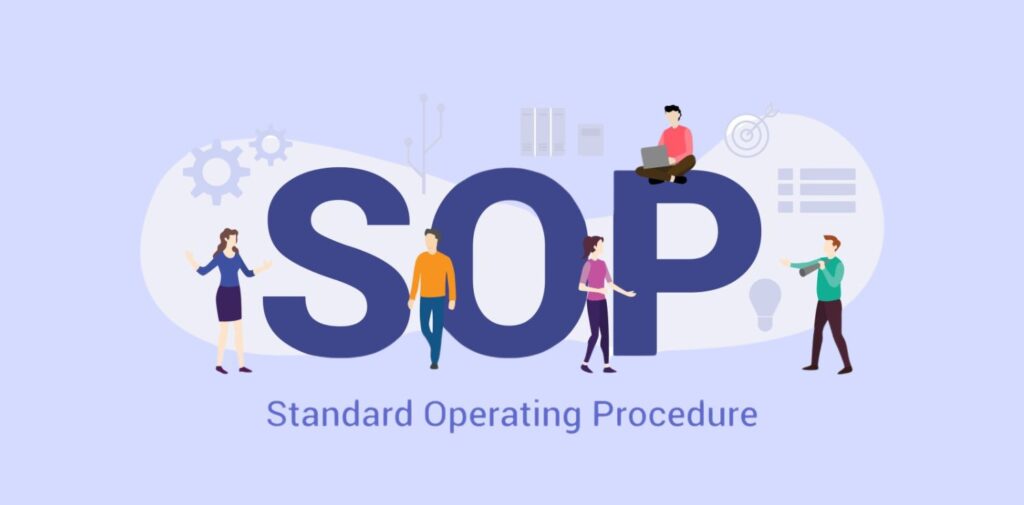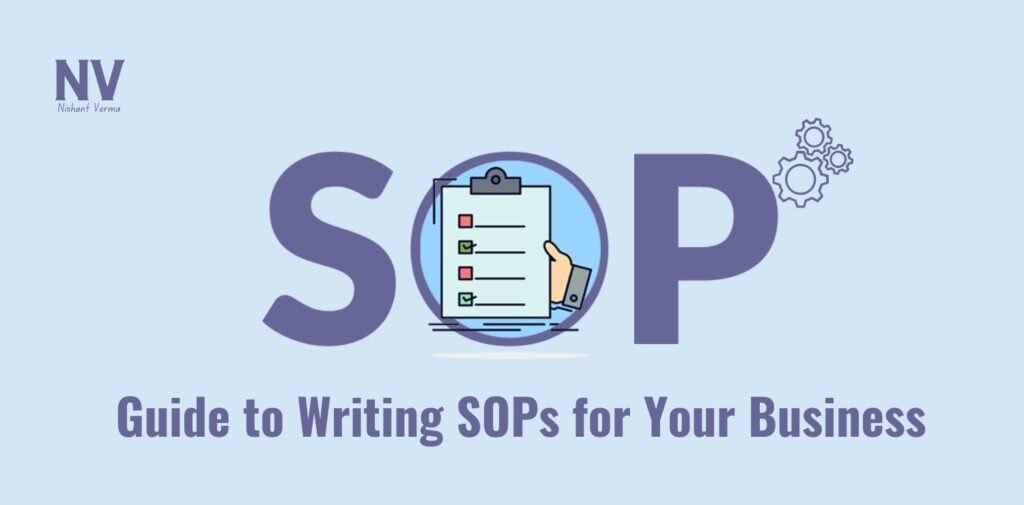Are you ready to make your business run smoother than ever? Well, guess what? Standard Operating Procedures (SOPs) are here to help. But what are SOPs, and how do you write them in a way that really works? In this easy-to-follow guide, we’ve got you covered. We’ll explain everything you need to know about creating SOPs for your business, from the basics to the nitty-gritty details. So, are you excited to dive in and get started?
SOPs are like your business’s secret weapon for getting things done right every time. They’re detailed guides that lay out exactly how to do a task or process in your business. Whether it’s making a sandwich, answering customer emails, or balancing the books, SOPs make sure everyone follows the same steps, ensuring consistency and quality in your operations.
Now, let’s get down to business and learn all about creating SOPs that work for you.
What’s a Standard Operating Procedure (SOPs)?
A Standard Operating Procedure (SOP) is like a roadmap that shows employees how to do a particular job in your business. It’s a detailed document that breaks down the task into easy-to-follow steps. Imagine it as a recipe for making your favorite dish: each step tells you what to do next until you’ve cooked up something delicious.
For example, if you’re a restaurant owner, your SOP might outline how to prepare a signature dish. It would start with gathering the ingredients, then move on to cooking and serving the meal. Each step would be explained clearly so that anyone following the SOP could do the job properly.
The purpose of an SOP is to make sure everyone does the job the same way every time. This helps maintain consistency, efficiency, and quality in your business operations. Whether it’s making a sandwich, handling customer inquiries, or cleaning a workspace, an SOP ensures that everyone knows what to do and how to do it right.
By having SOPs in place, businesses can save time, reduce errors, and improve overall performance. It’s like having a set of rules to follow, but in a document format that’s easy for everyone to understand and follow. So, if you want your business to run smoothly and your employees to work effectively, creating SOPs is the way to go.

How to Structure a Standard Operating Procedure Document:
A standard operating procedure (SOP) document usually has a few key parts to help everyone understand and follow the process. Here’s a breakdown in simple terms:
- Title Page: This is like the cover of the document. It includes the title of the procedure, a unique identification number, the date it was published or revised, and the names of the organization and division that will use it. It also lists the people who created and approved the document.
- Table of Contents (ToC): If the SOP is long, it might have a table of contents to help people find their way around easily.
- Preparatory Information: This part explains the purpose and scope of the SOP, who’s responsible for what, any materials needed, and safety precautions.
- Procedures Section: This is the meat of the document. It lays out the step-by-step instructions for completing the process. For complex tasks, you might break the steps into smaller ones. Using visuals like graphs or diagrams can make things clearer.
- Quality Control and Assurance: Here, employees can check their work against best practices, previous results, and performance guidelines.
- References and Glossary: This section provides further readings and explanations for any terms used in the SOP.
That’s how an SOP document looks. But how do you create one?

How to Write a Standard Operating Procedure (SOP):
- Start with the end in mind: Begin by stating what you want to achieve with the process. This helps everyone understand the goal and stay focused on it throughout.
- Break it down: Take the process and break it into smaller, easier-to-manage steps. This makes the task less overwhelming and helps ensure nothing gets missed.
- Be specific: For each step, provide detailed instructions that leave no room for confusion. Use simple language and avoid jargon to make sure everyone can understand.
- Use visuals: Sometimes, words alone aren’t enough. Use diagrams, flowcharts, or screenshots to illustrate the steps visually. This can make the process easier to grasp, especially for visual learners.
- Review and revise: Before finalizing the SOP, have stakeholders review it to ensure accuracy and clarity. This could include team members who will be using the SOP, supervisors, or subject matter experts. Incorporate any feedback or suggestions for improvement before making it official.
By following these steps, you can create a clear and effective SOP that guides users through the process smoothly. Whether it’s assembling a product, handling customer inquiries, or managing inventory, a well-written SOP can help ensure consistency and efficiency in your operations.

Use SaaS Management to Automate Your Processes:
In today’s digital world, there are many software options to help streamline your Standard Operating Procedures (SOPs) and automate your business processes. Specifically, Software as a Service (SaaS) management tools can be incredibly useful. These tools assist in tracking and managing your SOPs, ensuring they’re regularly updated and readily available to your team.
With SaaS tools, you can centralize your SOPs in one place, making them easily accessible to everyone who needs them. These tools often include features like version control, so you can keep track of changes and ensure that everyone is working from the most current version of the SOPs.
Furthermore, SaaS management tools can help automate repetitive tasks outlined in your SOPs. For instance, they can send reminders for scheduled tasks or trigger actions based on certain conditions being met. This automation saves time and reduces the risk of human error, allowing your team to focus on more important aspects of their work.
Overall, leveraging SaaS tools can significantly improve the efficiency and effectiveness of your SOPs. By ensuring they’re always up to date and automating routine tasks, these tools empower your team to work more productively and consistently.
Conclusion
Writing SOPs for your business may seem like a daunting task, but with the right approach, it can be a valuable tool for improving efficiency and consistency. By following the steps outlined in this guide and leveraging SaaS management tools, you can create SOPs that empower your team to perform their best and drive success for your business. So, what are you waiting for? Start writing your SOPs today and watch your business thrive.




